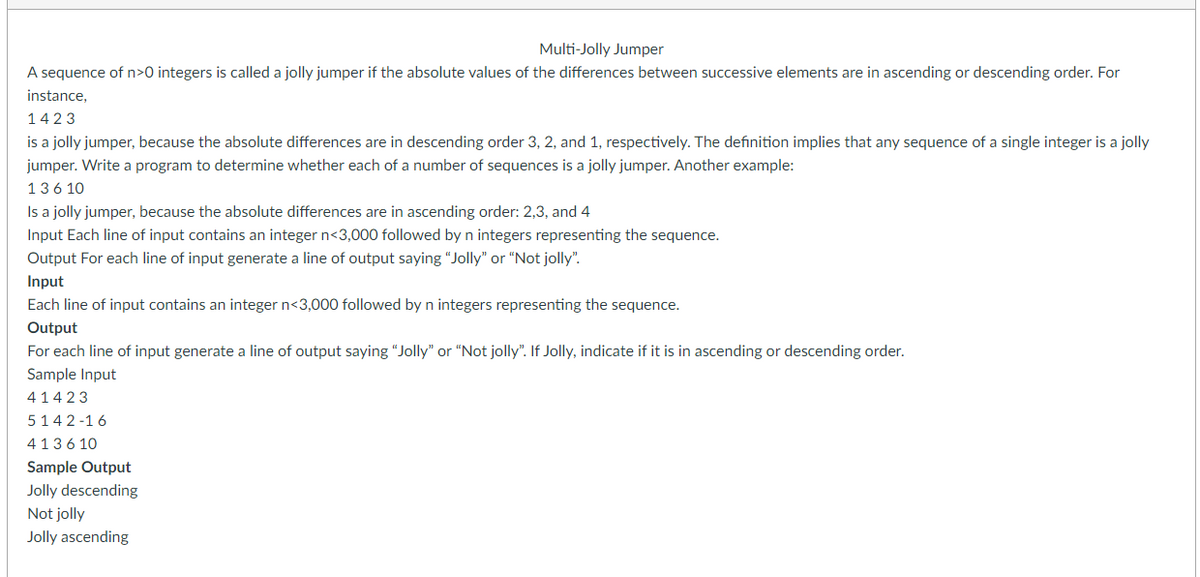A sequence of n>0 integers is called a jolly jumper if the absolute values of the differences between successive elements are in ascending or descending order. For instance, 1423 is a jolly jumper, because the absolute differences are in descending order 3, 2, and 1, respectively. The definition implies that any sequence of a single integer is a jolly jumper. Write a program to determine whether each of a number of sequences is a jolly jumper. Another example: 13610 Is a jolly jumper, because the absolute differences are in ascending order: 2,3, and 4 Input Each line of input contains an integer n<3,000 followed by n integers representing the sequence. Output For each line of input generate a line of output saying "Jolly" or "Not jolly". Input Each line of input contains an integer n<3,000 followed by n integers representing the sequence. Output For each line of input generate a line of output saying "Jolly" or "Not jolly". If Jolly, indicate if it is in ascending or descending order. Sample Input 41423 5142-16 413610 Sample Output Jolly descending Not jolly Jolly ascending
Control structures
Control structures are block of statements that analyze the value of variables and determine the flow of execution based on those values. When a program is running, the CPU executes the code line by line. After sometime, the program reaches the point where it has to make a decision on whether it has to go to another part of the code or repeat execution of certain part of the code. These results affect the flow of the program's code and these are called control structures.
Switch Statement
The switch statement is a key feature that is used by the programmers a lot in the world of programming and coding, as well as in information technology in general. The switch statement is a selection control mechanism that allows the variable value to change the order of the individual statements in the software execution via search.

Step by step
Solved in 4 steps with 2 images




